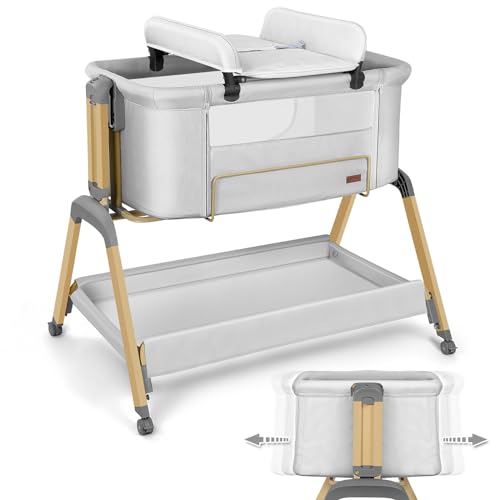The Ultimate Guide To Tots And Cots
Tots and Cots: A Comprehensive Guide for Parents
When it pertains to making sure a safe and comfortable sleeping environment for infants and toddlers, the options moms and dads make— ranging from cribs to cots— can significantly impact their wellness. Today's short article dives deep into the intricacies of choosing the very best sleeping plans for tots, stressing security, style, performance, and how these options develop as a kid grows.
Comprehending Tots and Cots
Tots typically refer to kids, especially toddlers aged in between 1 to 3 years, while cots are the sleeping arrangements particularly created for infants and young children. The appropriate sleeping equipment for this age group consists of different kinds of cots, cribs, and toddler beds.
Types of Cots
Numerous designs exist to fulfill the diverse requirements of both moms and dads and kids. Below is a list detailing the most common types of cots offered:
Standard Crib
- A traditional crib is designed for babies and normally includes sides that can be changed to different heights.
Convertible Crib
- This type of crib can convert into a toddler bed, daybed, or full-sized bed as the kid grows, making it a long-lasting investment.
Portable Crib
- Also called travel cots, these are lightweight and easily collapsible, ideal for traveling or smaller sized living areas.
Co-Sleeper
- A co-sleeper crib connects to the side of the moms and dads' bed, enabling for easy gain access to while guaranteeing the baby has a separate and safe sleeping area.
Young child Bed
- A toddler bed is a small bed that resembles a basic bed however is created specifically for toddlers, typically including security rails.
Mini Crib
- Mini cribs are smaller sized than basic cribs, making them an excellent alternative for tight spaces, however they appropriate for infants just.
Security Considerations
Guaranteeing safety is paramount when selecting a cot for a kid. Here are important security standards parents ought to think about:
- Check for CPSC Certification: Ensure that the cot abides by the Consumer Product Safety Commission (CPSC) standards.
- Avoid Drop-Sides: Cots with drop-sides have actually been connected to security threats, and the newest safety policies forbid them.
- Utilize a Firm Mattress: A company bed mattress lowers the danger of suffocation and ought to fit snugly within the cot.
- Keep Bedding Simple: Use a fitted sheet and avoid pillows, comforters, and stuffed animals that can pose suffocation dangers.
- Follow Weight and Age Guidelines: Ensure the child has not exceeded the cot's weight limitation and is still within the recommended age.
Transitioning from a Cot to a Toddler Bed
The transition from a cot to a toddler bed can be a psychological turning point for both moms and dads and children. Here are steps to alleviate the transition:
Timing
Deciding when to shift can be subjective, however it's generally suggested to make the switch in between 18 months and 3 years, based upon elements like:
- Physical Ability: If the child is climbing up out of the cot.
- Potty Training: Consider transitioning if the child is potty training and requires easier access.
- Habits: Exhibiting signs of maturity, such as following directions or expressing a desire for self-reliance.
Tips for Making the Transition Smooth
Include Your Child: Let the kid choose their new bed linen or bed decor to impart enjoyment about the change.
Keep Routine Consistent: Maintain the kid's bedtime regimen to supply convenience throughout this duration of modification.
Explain the Change: Discuss the shift to a toddler bed favorably, making it sound like a terrific experience.
Precaution: Place the bed against the wall or usage bed rails to avoid falling during sleep.
Choosing the Right Bed
When picking a young child bed, moms and dads need to think about factors like:
- Height: Low-profile beds are perfect for young children who might fall out during sleep.
- Resilience: Ensure the bed can hold up against active play as well as sleep.
- Design and Design: Choose a style that matches the kid's space and is appealing to the kid.
Choosing the best cot for your little one can be a difficult procedure, but understanding the options readily available, essential security factors to consider, and the right timing for transitioning to a young child bed can make this journey much easier for parents. Investing time and effort into these decisions will guarantee that your kid has a safe, comfy, and supporting sleep environment.
- * *
FAQs
1. What is Baby Cot Bed in between a cot and a crib?
- A cot is typically a smaller bed created for younger toddlers, while a crib is a bigger bed that is usually appropriate for infants approximately 3 years of ages.
2. When should I move my kid from a crib to a young child bed?
- The shift time is typically between 18 months and 3 years; this change is based upon the kid's physical abilities and behavioral signs.
3. How can I guarantee my child is safe while sleeping?
- Always abide by security standards, use a firm mattress with a simple bed linen plan, and keep track of the cot's weight limit.
4. What should I do if my kid attempts to climb out of the cot?
- If your child is climbing up out, it may be time to consider transitioning to a young child bed to prevent falls.
5. Can I utilize the very same bed mattress when transitioning?
Typically, it is best to change the crib bed mattress with one that is particular to the young child bed. Cheap Baby Cots fits snugly and abides by safety requirements.
- *
By thinking about these elements, moms and dads can design healthy sleep routines and supply their children with a secure environment that promotes restful sleep. Investing in quality sleeping arrangements will add to the kid's overall development and happiness.
